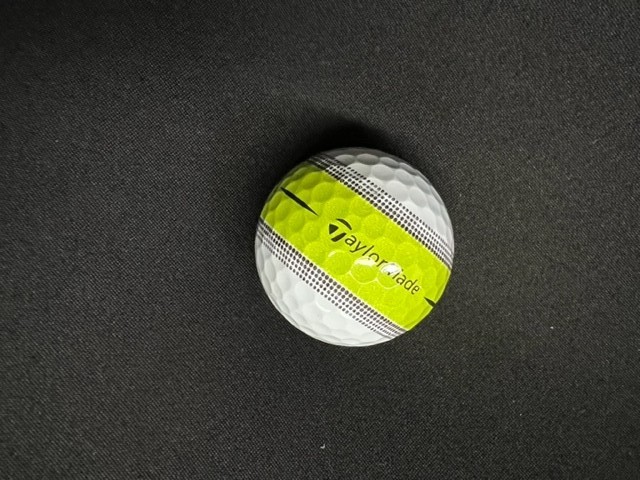-
Posts
10 -
Joined
-
Last visited
About bogeymonsters

- Birthday 09/17/1980
Contact Methods
-
Twitter
@theStoryShark
-
Instagram
@jerrywojenski
Profile Information
-
Gender
Male
-
Location
Chicago, IL
Player Profile
-
Age
40-49
-
Swing Speed
91-100 mph
-
Handicap
22.5
-
Frequency of Play/Practice
Daily
-
Player Type
Competitive
-
Biggest Strength
Short Game
-
Biggest Weakness
Approach
-
Fitted for Clubs
Yes
Recent Profile Visitors
649 profile views
bogeymonsters's Achievements
-
Hands down, the Callaway ERC Soft. It's a shockingly good ball and I hate to love it, because I cannot stand the CS lineup. But hats off to Callaway because that ERC Soft is long ball that compares really well to the TM Tour Response on approach shots and greenside shots. Closest non-urethane ball that plays like a urethane ball IMO.
-
I wouldn't be surprised if that had something to do with it, or they were trying to save on production costs to remain price competitive. I believe OnCore's first balls were produced in a plant in China, and I wouldn't be surprised if they went back to their original manufacturer.
-
I've played both in back-to-back rounds. For me at least, TP5x was just a more stable and predictable ball. It flew straight and the dispersion was really impressive. On approach shots, I just hated the feel of the CSX LS -- it was like hitting a rock. Distance was similar with maybe the CSX LS edging out TP5x, but honestly it wasn't anything crazy long, but maybe a couple feet. I just wish TM would have a more straightforward line-up like Titelist. TP5 is a higher spinning ball, TP5x has more moderate spin, but they don't have a premium, truly LS ball. I guess you can say the Tour Response is their lowest spinning option, but that's a low compression ball so maybe a high compression, low spin ball would fill a gap in their premium line-up.
-
Anyone can play an “X” ball. The MGS golf ball test showed that even slow swing speeds had better distance with higher compression balls like the MTB-X. Ever since the industry went from liquid to rubber cores, any golfer can play any ball and as MGS proved out “soft is slow”. So go ahead and take a sleeve of X balls to the course. I’m a higher handicap player and love the firmer feel and admit I get a bit more distance and definitely better green-side spin.
-
I just got back from Dicks. Sadly, they know me all too well there and I’m guilty of using their fitting bay for practice. Noticed that they’re fitting people with the Maxfli Tour. Which I guess is smart if you want to sell more of your balls, but both balls in the bay were cracked. I mean they were seriously destroyed. I mentioned it to the Dicks crew and they said “ya, it’s horrible but Dicks won’t let us get new balls.” Seriously?! Not only would I be using fresh balls for fittings, I’d give a two-ball sampler sleeve of the Maxfli Tour and X to everyone who made a golf purchase. They’re missing a serious chance to market their product. On a separate visit a few months ago, a customer asked the associate about the Maxfli balls and if they were any “good.” The associate shrugged and said “never heard of them.” Shut the front door. How do you work in the Dicks golf section and not know about your own golf balls. Dicks corporate needs to get their act together if they want Maxfli to sell better.
-

Iron Fitting, Indoor vs Outdoor Difference
bogeymonsters replied to JohnSmalls's topic in General Equipment Talk
Agreed. The biggest advantage of outdoor fittings is to see the ball flight, and of course wedges really can only be fit well outdoors. If there is a major discrepancy between mat and grass stats, then perhaps it may be the quality of the mat. Only a few of the most premium mats have turf that behaves similar to grass. A low quality mat can affect your numbers. -

Pinetree Golf Balls – sign of things to come?
bogeymonsters replied to berkeleybob's topic in Golf Balls/Shafts/Grips
The pandemic golf boom, the success of some DTC brands like Vice, and price inflation among name brand golf balls may be driving new "boutique" golf ball brands. It seems that there are a lot of new players trying to establish themselves as the craft beer of golf balls, but I don't think this trend will last much longer, nor do I think some of the newer DTC brands will last. I'm a collector of urethane golf balls and in my "gotta catch 'em all" Pokemon Go approach to collecting, I've come across a lot of new DTC brands in the U.S. including Quantix, Trust, and Piper. Some of these brands are based overseas (you can tell by the bad English riddled all over their US websites), but they use order-fulfillment companies or marketplaces such as Amazon to push their product. So it doesn't matter if they are only selling a hundred boxes a month, because their opex costs are relatively low. Meanwhile, without a local presence and solid marketing plan, these groups will never reach the level of sales and name recognition as OnCore, Vice, and Snell. To succeed, you need to have more than just a YouTuber review, and you need a better sales pitch than "we're like Pro V1 but cheaper". You need to build-up a large enough adoption rate among golfers that they start bringing in new customers through word-of-mouth, and without that buzz I don't see how your brand lasts. There are a few other headwinds working against the newer DTC brands: 1) SUPPLY CHAIN ISSUES: Chemicals supplies to make golf ball covers, particularly urethane, are tight right now. It's driving-up the cost of production, and obviously the largest manufacturers get the lions share of what raw materials are available. Additionally, there are only so many golf ball factories and with recent acquisitions (I'm talking about you TM), getting someone to produce your product is extremely difficult. These supply chain and manufacturing issues will stem the flow of new brands, or at the very least, constrain their inventory levels. 2) THE GOLF BOOM (OR BUST): Now that we are entering an endemic stage globally, people are starting to go back to their pre-COVID routines, which means less time for golf. It was a gorgeous weekend (finally) in Chitown, but yet I had no trouble finding a tee time at some of the most popular courses. That wasn't the case the last couple of years. While I don't think golf's popularity will drop to pre-pandemic lows, I do think that the frenzy is starting to subdue a bit. We have a larger golf community than before the pandemic, but most new golfers may only be playing a round a month rather than a few times a week. Fewer rounds of golf mean, fewer lost or damaged balls to replace. 3) BRAND NAMES WIN: When all is said and done, the brand names have a iron clad grip on the market. Save for a few disrupters like Snell, Oncore, Vice, and maybe Sugar, there is not much market share for DTC brands. Craft beers have gained interest because they have a better flavor, as well as story behind them that consumers connect with. The craft breweries often experiment with different ingredients to give their beers a unique taste which usually cannot be found at other types of brewery -- there are really no limits to crafting new brews. Golf balls are a different story. In sticking within USGA guidelines, there is only so much a new golf brand can do to differentiate themselves from the rest of the market. Perhaps aerodynamics offers a bit more opportunity to experiment, but the smaller brands lack the R&D to develop new dimple patterns and often just go with one of the stock options provided by the manufacturer. So being a "copy-cat, wannabe for less" is not a winning story. OnCore at least has an interesting story with their mantle technology, Dean Snell is a golf ball OG, and Vice made golf cool. What is Piper's story? Or this Pinetree brand? There just is no compelling reason for a consumer to ditch a brand with gravitas to make these brands their new "gamer." Most golfers have not even tried or heard of the top DTC brands. My friends initially made fun of me for playing a ball named "Snell" (don't worry Dean, I took their money and bought another box of Snell with it). Titleist, Taylormade, and Callaway are the Nike and Adidas of golf balls, and that type of brand power is difficult to disrupt. One of my friends is a 7-hcp and plays Callaway Supersoft because of the price. Even after a lengthy lecture (next time I'll use PowerPoint) on the benefits of urethane covers and that he can still save money by playing a great urethane ball like Snell or Vice, he refused to switch brands -- "nah, I'll stick to Callaway bc they know what's up" (insert eye roll here). In the long run, in order for a boutique DTC brand to succeed, it has to: 1) have a story that differentiates itself from other brands (and not just a low-price model); and 2) it needs to have enough sales volume to generate a word-of-mouth campaign to drive new traffic. That is a tall order when you have limited sales channels and manufacturing constraints. I think you will see these start-ups come and go, but I don't think we're going to see a robust craft golf ball industry anytime soon. p.s. As I mentioned, I'm a collector, and I'd love to get a sample of the Pinetree balls. PM me if you can help me score some. -
I've always liked the TR, but I'm not sure about the striped version. I've tried it during a few rounds and, while I appreciate the alignment on the green, it can be very disorienting depending how it lands on the fairway. If your approach shot is due East, but the strip is pointing Northwest it's hard to orient yourself correctly. For now, I've resorted back to the tried and true all-white TR and I'm saving the stripes for putting practice.
-
First time getting a club fitting and decided to go to two different fitters to see how the results would match up. In my first fitting I was told not to use a 3W and they fit me with a G425 5W. The fitter said the shorter shaft and additional loft will be easier to hit consistently and gain similar yardage to a 3W. In the second fitting, they told me not to go with a 5W and fit me for a G425 3W with a half inch cut off the shaft. I guess G425 is the right model, but I'm confused on whether I should go with the 3W or 5W - thoughts?






